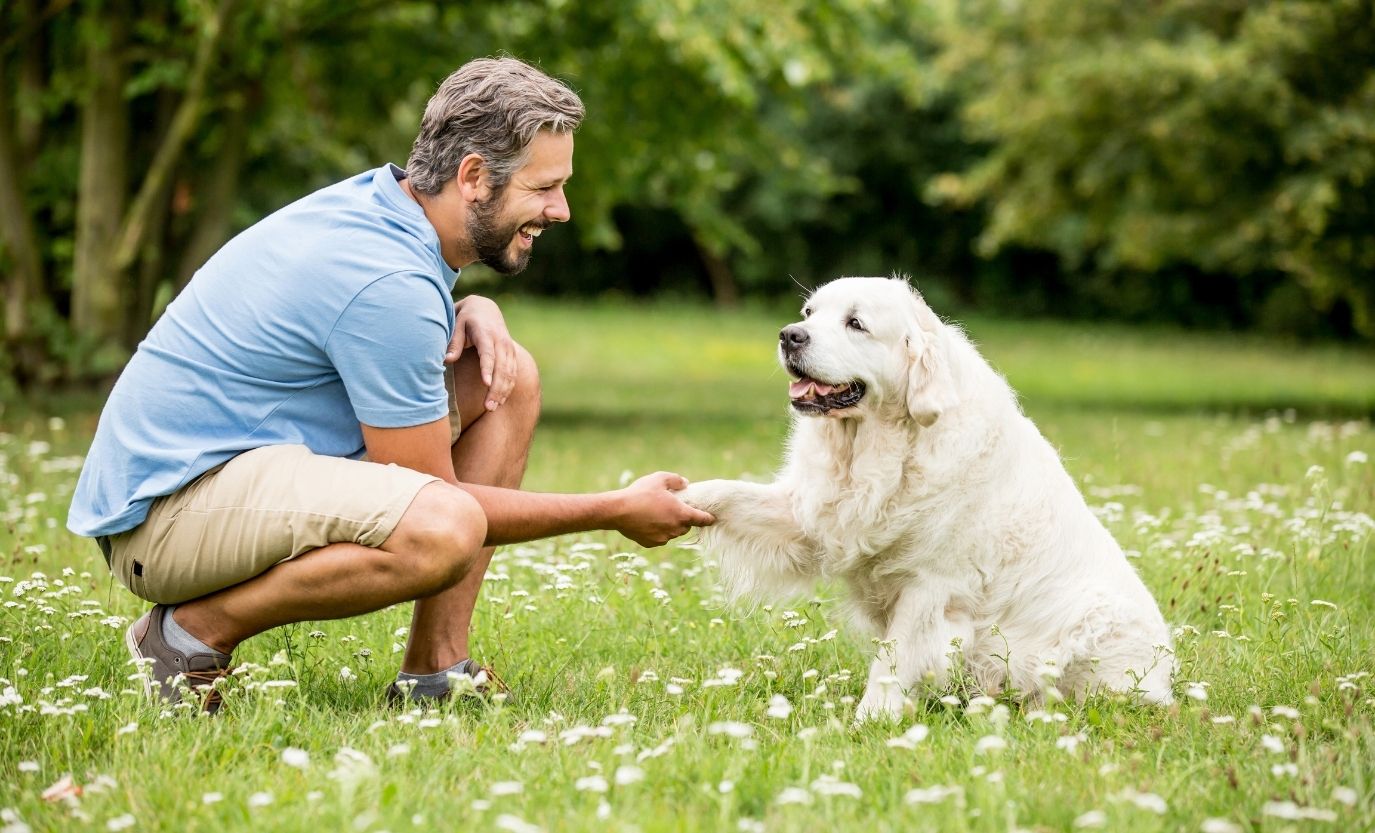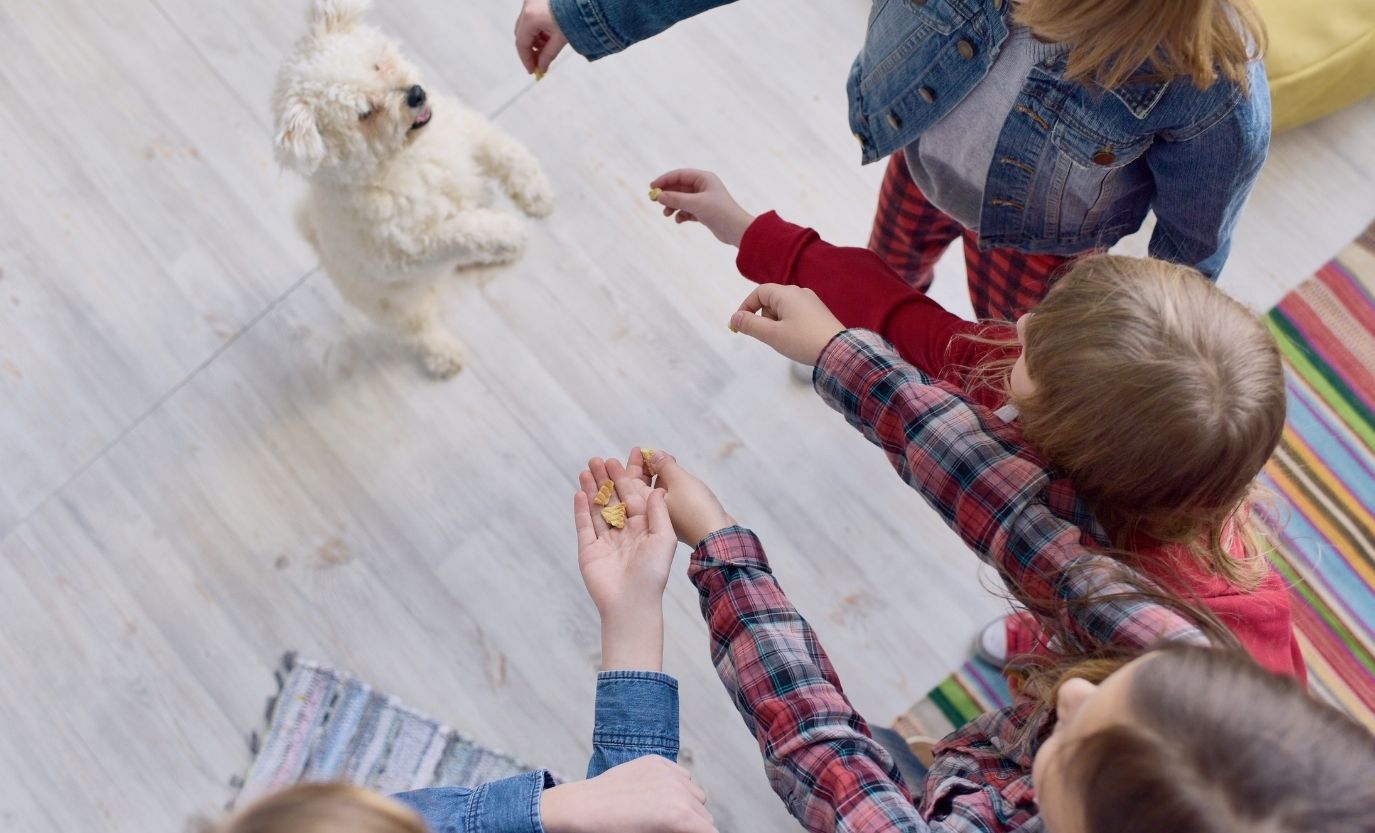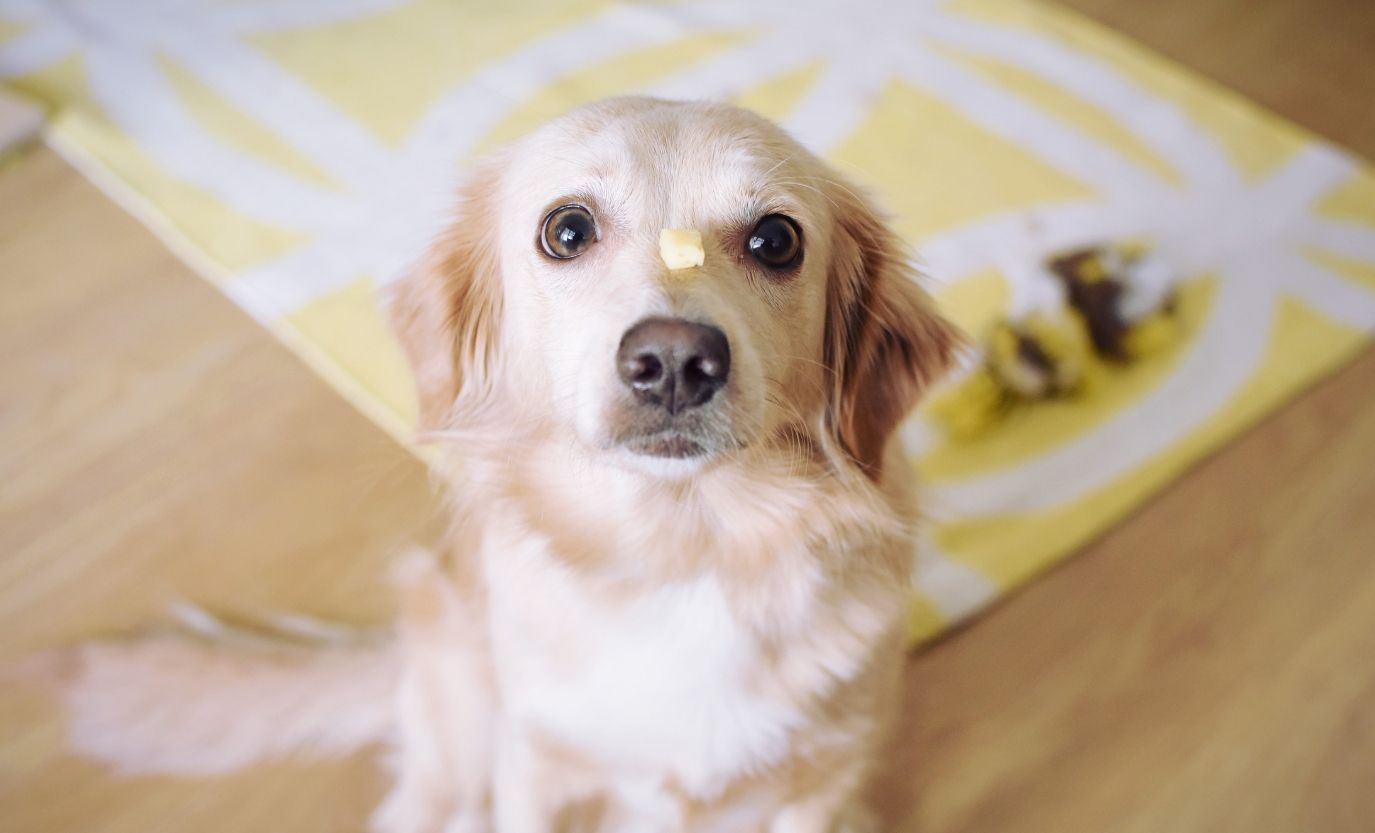As a Certified Dog Trainer, I believe that consistency is the most important aspect in being successful with your training. Dogs can typically become easily confused and often stressed with inconsistency. They cannot reason or understand the minute differences. Dogs thrive on routine, clear expectations, and uniform instructions. Making sure that their training is consistent is key to their success, and will help you have a happier, more relaxed dog in the long term (which is better for both of you!). Also make sure everyone in the household listens and accepts responsibility for training and working with your dog the same way all the time. Inconsistency is unfair. One minute your dog gets away with or is rewarded for a bad behavior and the next minute he is chastised and/or punished for the same act. This type of environment makes it hard, if not impossible to learn. You and everyone else in the household must be firm but gentle, patient, have fun and be CONSISTENT. First, I’ll cover some common types of inconsistencies, and then I’ll cover some ways you can integrate consistency into your daily life with your dog, from commands to routines to house rules, and why it matters.

Consistency Provides Structure & Can Make Your Dog Feel Less Stressed
Consistency isn’t just helpful for making sure your training journey is successful, it can actually help your dog to feel calmer and more at ease. Dogs react negatively to the situations around them when they don’t feel in control. If they have consistent structure at home and trust in their handler, they will feel less fearful and stressed, even in new situations.
Consistency can be very helpful for rescue dogs, who may have had trauma in the past that led to negative behavior patterns, or at the very least have often been forced to adapt to significant change in their lifetimes. A calm dog is a happy dog, and the easiest way to get a calm dog is a set routine. No matter what your dog’s history is, how old they are, or how much training they’ve had, you can integrate routine into your daily life with your dog. If you’re a new dog parent or considering bringing home a new dog soon, now is a great time to create structure and routine for your dog.
When you create a daily routine for your dog, be sure to integrate training, mental stimulation, exercise, and some downtime. Dogs need time to decompress just like people. There are many ways to structure into your daily routine with your dog. Here are some ideas of types of structure you could use.
- Serve your dog’s meals at the same time every day. I’m not a fan of “free feeding” or leaving your dog’s food out all day, as this could cause weight gain and lead to many other issues. Using your dog’s meals for training sessions works great too!
- If your dog is crate trained, make sure that they get some “alone time” in their crate throughout the day. Even if you’re home.
- Offer your dog opportunities to learn every day, this can be through canine enrichment activities like puzzle games or even obedience training.
- Make sure to train every day with your dog, whether it’s confidence-building tricks, place work, or simply practicing good leash manners and checking in with you on their daily walks!
- Practice consistent impulse control training with your dog daily. This might mean training your dog to wait to go outside until you give them the cue that it’s okay to go outside, even if the door is open, or making eye contact before you give them their food.

Inconsistency With Strangers
Most people don’t realize how just being inconsistent when they have company over, or when their dog meets a new person undermines the dog’s training in other areas of its life. Here’s a few examples of common mistakes made by owners in this category.
- “I don’t mind if my dog jumps on me, but I don’t want them jumping on other people.”
- “Our dog listens great at home, but he does not listen when we have company over or if we take him away from the house”
- “Our dog never runs out the front door until we have people visiting.”
Once again, inconsistency is to blame for your dog’s confusion. Dogs are very adept at reading situations; they recognize very quickly when we don’t want to exert the time and effort needed to work on their training and their behavior.
Your dog might never ignore a command given when you are at home alone but add the distraction of another person or take your dog somewhere and he doesn’t listen. Part of this is the addition of distractions which need to be added and worked on with training in mind, but another part is inconsistent training. People often don’t want to embarrass themselves or inconvenience themselves by working with their dogs when other people are around, so the dog learns he doesn’t have to obey when company is present.

Consistency With-In Yourself
People make the mistake of being inconsistent when they care about their dog’s behavior one minute, or in one situation but not another.
- “I usually don’t mind if my dog jumps up on me, but I hate it when he gets muddy paws on my work clothes, or snags my nylons”
- “I don’t mind if my dog gets on the sofa at night with me, but I don’t want him on the couch during the day when I am gone”
- “I don’t want my dog to bark, but I hate getting up in the middle of the night to tell him to be quiet”
Your dog does not understand the differences in these situations he lives for the moment he gets to do what he wants or what comes naturally for him, jumping up on you, laying on the comfortable sofa, and barking. He does not understand the variable or contingent to the situation, he only remembers he gets to do it sometimes, and that keeps him consistently trying. If 9 out of 10 times you keep him out of the bed but on that 10th time you relent, it is that moment of success and enjoyment that he remembers and will make subsequent attempts worse!

Keep Your Language Consistent When Training
There are many words for one thing in most languages, and humans can understand the concept of synonyms. But that’s much harder for dogs, who don’t speak our languages! Dogs learn individual cues, but don’t understand language in the same way we do.
Using more than one word for a cue can be very confusing for your dog. For example, if you have a dog that jumps up to greet people and you tell them “down” to tell them to greet calmly, but also want to use “down” as a command for them to lie down, your dog will have trouble understanding what you want them to do. Even a slight variation in language, like “come here” vs “come here now” can be confusing. The best verbal cues for dogs are short, clear words that you can say quickly when you need them (in whatever language you choose to train).
Verbal cues are more difficult for dogs to learn than hand signals or visual cues, so it’s especially important that we are consistent in this arena of training. If you have a dog that responds quickly when you use a hand signal but isn’t responding to verbal cues, it’s possible that you need to make sure that you are using the same word each time and not using the same word for multiple cues.
Make sure that everyone in your household knows what language to use with your dog to prevent multiple words from being associated with the same cue and be sure that everyone uses the word every time they are trying to train the cue.
Be Consistent in Your Actions to Provide Clear Communication
Whatever boundaries you decide to set with your dog, you should make sure that they are upheld consistently. If you don’t want your dog to be on your furniture, you shouldn’t ever let them up—even when you really want to snuggle. If you let them come up and sit on the couch with you sometimes when you are watching Netflix, you shouldn’t be surprised if your dog decides to hop up next to you while you are working from home the next day!
Consistent boundaries apply to training commands as well. If you want your dog to “hold” a behavior until released—for example, to stay in a sit until you say it’s ok to get back up—you should correct your dog if they slip out of it. Whatever your expectations are for your dog, the best way for them to meet them is for you to hold them to those standards every time you offer a command or cue.

Consistency In the Household
Often the inability of a family or couple to work as a team on dog training aids in the deterioration of the dog’s obedience. I have even worked with couples who use different commands. One person can’t say “Come” while the other person says, “Get over here!” and have it be as affective for the dog.
Your entire family needs to pick a training plan together so that all of you will be on the same page. Sit down and come up with consistent commands that mean the same thing to everyone and that everyone will utilize. Decide whether or not you will allow your dog on the furniture, and what behaviors you will reward and what behaviors you intend to change and come up with a plan for how you will install the changes as a family. Explain to everyone in the family how inconsistency hurts your dog’s ability to please everyone and therefore leads to them getting in trouble.
Think about this from the dog’s perspective… This morning I jumped on my human, and I got petted and lots of attention. This afternoon when I jumped on my human I got yelled at and shoved out the door.
Dogs can’t tell the difference between “home clothes” and “work clothes” and don’t understand why they got punished. This is where trust can fail between dogs and their owners.
Behaviors such as biting, and nipping is another example of inconsistency between family members. One person may allow rough wrestling or mouthing but another family member is more sensitive and cries, yells and punishes the dog for the exact same behavior. Dogs need consistent rules, guidelines, and structure to thrive. Inconsistencies will fail your dog!
Does it seem like your dog just doesn’t get it sometimes? Does one family member have a great relationship with them while another seems to be their doormat? Well, you’re not the only one who’s frustrated.
Your dog really does want to know what he should be doing. Trainers often hear that our dog jumps on, nips, or tugs Family Member “A” but never does these things with Family Member “B”. Why? Because he has no idea what you are talking about!
In order for a dog to understand what is expected in his daily family interactions, each person he lives with must be on the same page. Everyone should use the same cues and techniques for training. If one person says “sit” and another says “sit-down!” it will take a long time, if it ever happens, for them to learn what you want them to do.
If some family members allow the dog to jump on them and others don’t, it’s going to be very hard to stop them from jumping on people. If you don’t like begging (by the dog, that is) at the table, then no one should ever give the dog anything from the table.

Dogs are not born understanding English. They are very good at learning words but need to be taught word meanings very clearly and concisely. They have no idea that “down” and “lie down” mean the same thing. Or that “down” means something different when it’s hollered at them as they greet you by jumping than it does when you want them to put their body on the floor. Therefore, if Mary says Come!” and Tom says “Here!” it really isn’t fair to expect them to understand.
Learning how to train dogs is not easy. Luckily for us, dogs are forgiving of our mistakes. Everyone in the family doesn’t need to be a professional, but make sure everyone in the family uses the same cues with the dog. This will make it easier and more fun for all involved, especially your dog.
So, remember consistency is key!!! Remain consistent in your language, actions, and everyone that your dog interacts with. This will provide structure, lessen stress, and will help make training more desirable for both your dog and humans. But the biggest reward with consistency is you’ll generate successful results much faster and easier.
If you need help with creating a training plan that includes consistency or help with any other areas of training, I’m here for you.
Aaron Jones
Owner/Certified Dog Trainer



